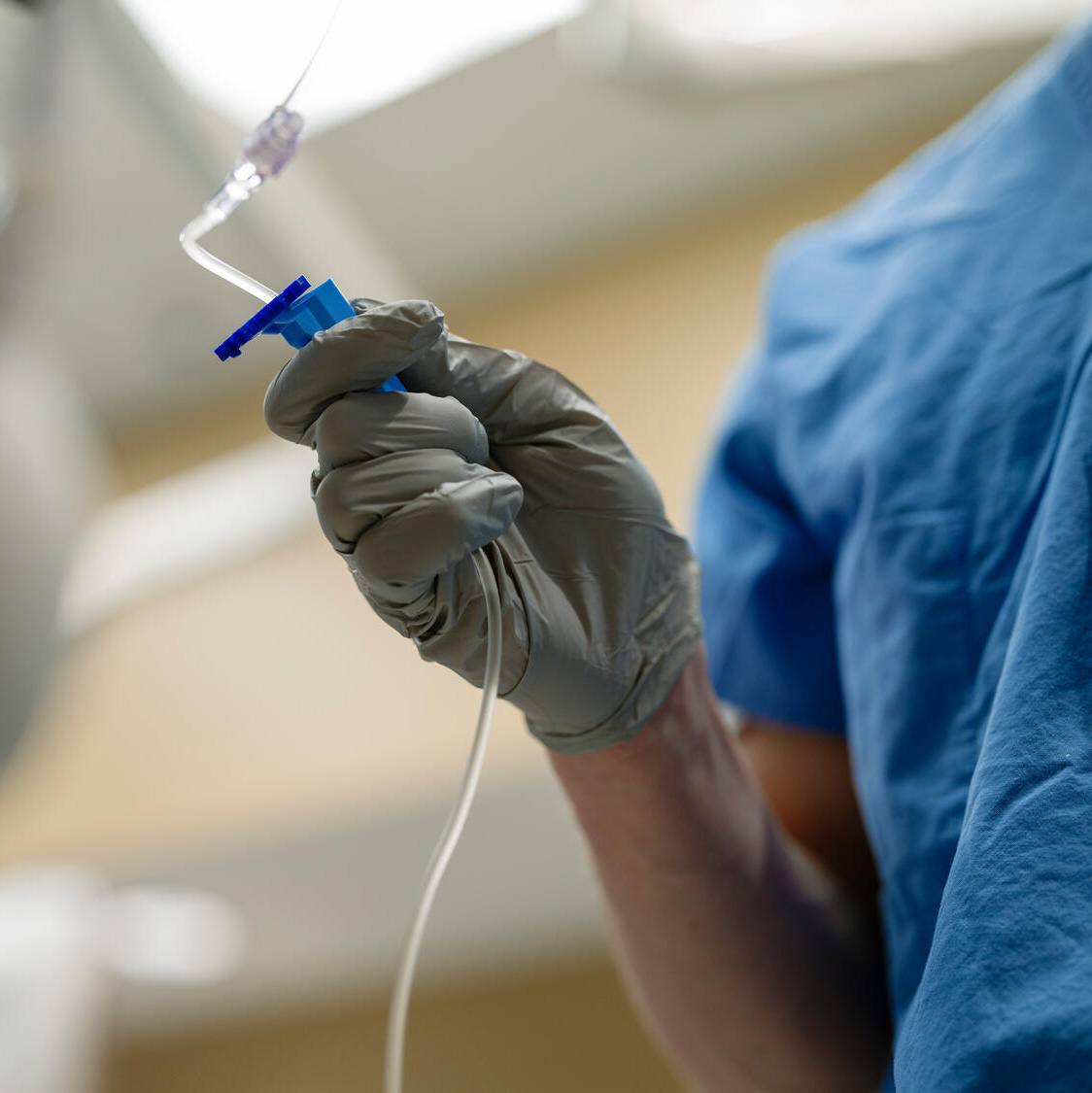-
Two kidney disease therapies square off in MENTOR trial
Membranous nephropathy is a disease leading, if untreated, to the need for kidney transplant. However current therapies have their own problems, says Mayo Clinic nephrologist Fernando Fervenza, M.D., Ph.D., ones that Dr. Fervenza and colleagues from across the world are trying to solve. For nearly a decade, Dr. Fervenza has been part of a study team trying to find better ways to use medication to treat this condition.

“Many of the current therapies have multiple and potentially severe toxic side-effects,” he explains, adding that they also vary in their ability to help patients with a key component of kidney health: protein buildup in the urine. The job of the kidney is to filter blood and extra fluid from the body, forming urine. In a majority of patients with membranous nephropathy the immune system attacks the kidney and disrupts its filtration barrier leading, eventually, to development of nephrotic syndrome. Nephrotic syndrome causes too much protein to build up in a patient’s urine, leading to kidney damage.
Dr. Fervenza is corresponding author on the Membranous Nephropathy Trial of Rituximab (MENTOR) study, published in July in the New England Journal of Medicine (NEJM), comparing remission rates for two existing treatments for membranous nephropathy: cyclosporine and rituximab. Both of these medications are among the least toxic options for treating this condition, says Dr. Fervenza, with cyclosporine being the current the preferred therapy in the United States and Canada. In the study, Dr. Fervenza and co-authors compared remission rates for the two treatments, hoping to determine if rituximab performed at least as well as cyclosporine.
What they found was that rituximab often performed better.
The challenger dominates in the ring
Cyclosporine works by inhibiting the action of immune cells, keeping the body from attacking itself. The issue with this treatment, says Dr. Fervenza, is that patients often relapse after they stop taking the drug, reducing the rate of remission and length of long-term kidney function. Many patients also experience hypertension and renal toxicity, which also cause damage to the kidneys while taking cyclosporine. In MENTOR, the study team found that, compared to cyclosporine, patients treated with rituximab experienced:
- More frequent and longer remission.
- Similar rates of adverse events, but less frequent serious events.
- Better adherence to therapy, since rituximab required infrequent intravenous injections, rather than twice daily oral pills.
- Preservation or improvement of kidney function and better clearance of disease-causing antibodies.
In an editorial published alongside the MENTOR study in NEJM, Piero Ruggenenti, M.D., and Giuseppe Remuzzi, M.D., say the study’s data indicate that rituximab should replace cyclosporine as the preferred treatment for primary membranous nephropathy. However, they caution that not all patients respond to rituximab and thus the search for better therapies must continue.
A fair fight…but a long one
Adil Bharucha, M.B.B.S., M.D., director of the Mayo Clinic Office of Clinical Trials, calls MENTOR’s study design “flawless” and the findings “a paradigm shift in the management of membranous nephropathy.”

Drs. Rugenenti and Remuzzi also praised the design of MENTOR in their editorial but drew attention to the nearly 20 years it has taken to get to this point. This sort of timeline for testing a drug is not unusual, says Dr. Bharucha. Prior to MENTOR, two studies (a 12-month study and a 24-month study) were conducted to evaluate dose, drug levels, and duration of treatment. A third study evaluated treatment response of the potential bio-marker (PLA2R levels). All these studies were needed to gather the information to pursue MENTOR. But in the future, Dr. Bharucha says, there may be new options to consider that could help accelerate the pace of this work.
Mayo Clinic is leading the way in the development of approaches and techniques intended to enhance the conduct of clinical trials. Dr. Bharucha has his eye on artificial intelligence tools that will make it easier to reach and enroll eligible volunteers. He also advocates for the use of pragmatic clinical trials when appropriate: an approach to trial design that is embedded in ongoing real-world medical practice, constantly drawing on new data and providing continuous feedback.
Dr. Bharucha’s vision is of clinical trials that are more closely integrated with patient care. “This trial exemplifies our ability to more swiftly find answers and deliver hope and healing to more patients, not only at Mayo Clinic, but also elsewhere.”







